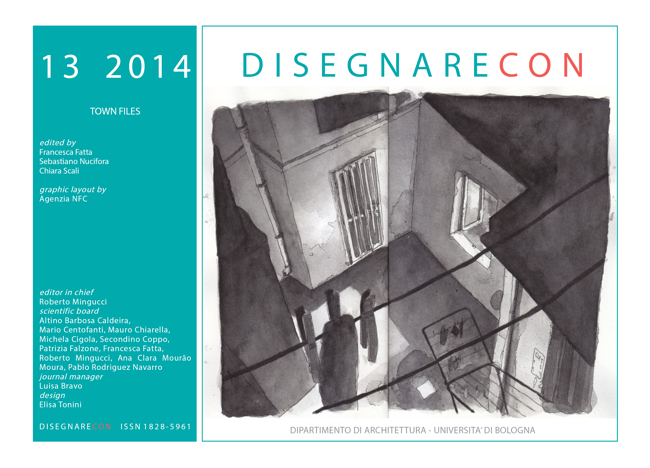Tools and graphics devices for the understanding and the interpretation of urban areas The Pianta Grande di Roma by Giovanni Battista Nolli
DOI:
https://doi.org/10.6092/issn.1828-5961/4042Keywords:
architectural representation as language architectural survey, analysis of the city and urban space.Abstract
The techniques of representation and measurement always lead changes, both in the survey and the design activities, but especially induce changes in the way of thinking at the disciplines of survey and design and the educational choices that will knead the action. In the mid-eighteenth century, the updating and the diffusion of the "plane table" - with the orthogonal representation that follows - it promotes a radical change in the way of seeing the city, analyze and tell its wonder. The operational capabilities of the new instrument and the abstraction of orthogonal figuration promote, in other words, entirely new graphics devices and interpretative cares and, with these, a remarkable change in how to detect and read the determinants of urban areas.
References
Alberti Giuseppe Antonio (ristampa 1840), Istruzioni pratiche per l’ingegnere civile, Milano.
Scaccia-Scarafoni Camillo (1939), Le Piante di Roma possedute dalla Biblioteca dell’Istituto di Archeologia e Storia dell’Arte, Libreria dello Stato, Roma.
Frutaz Pietro Amato (1962), Le Piante di Roma, Istituto di Studi Romani, Roma.
Faccioli Clemente (1966), Gio. Battista Nolli (1701-‘56) e la sua Gran “Pianta di Roma” del 1748 …, Roma Studi Romani, (4).
Portoghesi Paolo (1967), Roma Barocca - Storia di una civiltà architettonica, C. Bestetti, Roma.
Insolera Italo (1981), Roma – Immagini e realtà dal X al XX secolo, Laterza, Roma-Bari.
Panofsky Erwin (1984), La prospettiva come “forma simbolica”, Feltrinelli Milano.
Docci Mario, Migliari Riccardo, Bianchini Carlo (1992), Le di Girard Desargues e Guarino Guarini, in disegnare idee immagini, Gangemi III (4).
Downloads
Published
How to Cite
Issue
Section
License
Copyright (c) 2014 Aldo De Sanctis





